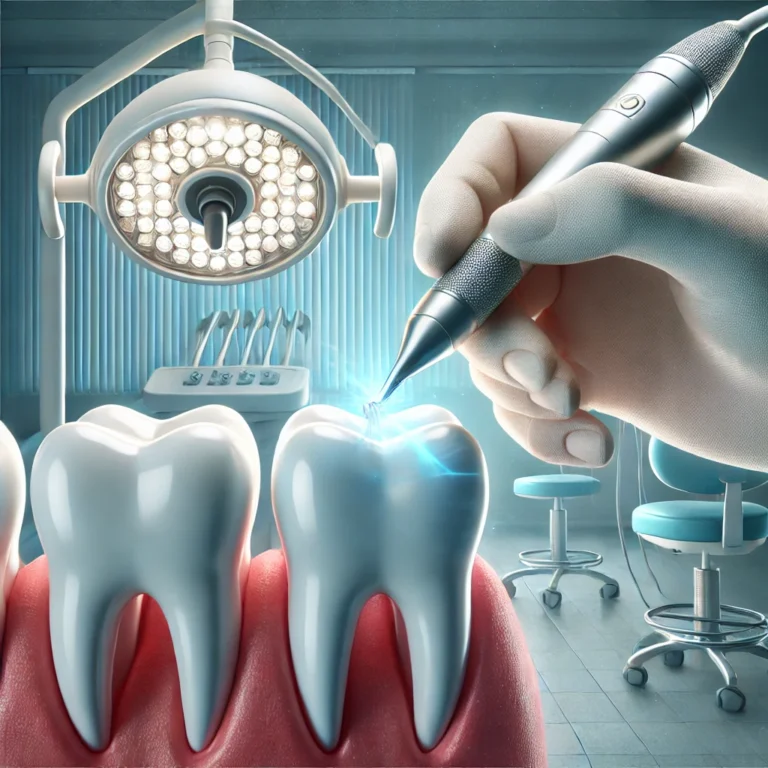
Root canals often carry an intimidating reputation, but much of the fear surrounding this procedure is based on myths rather than facts. In truth, root canals are a routine, effective way to save teeth, relieve pain, and restore oral health. Here’s a comprehensive guide to help you understand root canals, separate myths from reality, and feel more confident about this common dental procedure.
What Is a Root Canal?
A root canal is a dental treatment used to save a tooth that has become infected or severely damaged. Inside every tooth is a soft tissue called the pulp, which contains nerves, blood vessels, and connective tissue. When the pulp becomes inflamed or infected due to deep decay, repeated dental procedures, or trauma, it can cause severe pain and lead to further complications.
The root canal procedure involves removing the infected pulp, cleaning and disinfecting the inside of the tooth, and sealing it to prevent reinfection. This allows the tooth to remain functional and pain-free.
The Root Canal Procedure Step-by-Step
Understanding what happens during a root canal can help ease anxiety about the process:
- Diagnosis and Planning: Your dentist begins by examining the tooth and taking X-rays to confirm the extent of the damage.
- Numbing the Area: Modern anesthesia ensures the procedure is pain-free, keeping you comfortable throughout.
- Pulp Removal: The dentist drills a small opening in the tooth to access and remove the infected pulp.
- Cleaning and Shaping: The root canals are meticulously cleaned, disinfected, and shaped to prepare them for filling.
- Sealing the Tooth: The cleaned canals are filled with a biocompatible material like gutta-percha to prevent future infections.
- Restoration: Most teeth treated with root canals are capped with a crown to restore strength and functionality.
The entire procedure is straightforward and typically takes one or two visits, depending on the complexity of the case.
Myths vs. Reality
Myth 1: Root Canals Are Painful
Reality: This is perhaps the most persistent myth, but it’s far from the truth. Advances in anesthesia and technology make root canals virtually pain-free. In fact, the procedure relieves the intense pain caused by infection or inflammation.
Myth 2: It’s Better to Extract the Tooth
Reality: Extraction is sometimes necessary, but saving a natural tooth is almost always the better choice. A root canal preserves the tooth’s structure, preventing shifting teeth, bite problems, and the need for expensive replacements like implants or bridges.
Myth 3: Root Canals Cause Illness
Reality: This myth originates from outdated and debunked studies. Modern dentistry has shown no link between root canals and systemic health issues. On the contrary, root canals eliminate infection, improving overall oral health.
Myth 4: A Root Canal-Treated Tooth Will Never Need Attention Again
Reality: While the treated tooth is no longer sensitive to pain, it’s still susceptible to decay or damage. Proper oral hygiene and regular dental check-ups are essential to maintaining its health.
Benefits of Getting a Root Canal
Opting for a root canal offers numerous advantages over extraction or leaving the infection untreated:
- Pain Relief: The procedure eliminates the source of infection and discomfort.
- Preservation of Natural Teeth: Keeping your tooth intact helps maintain your bite, chewing efficiency, and appearance.
- Improved Oral Health: By removing infection, root canals prevent the spread of bacteria to neighboring teeth or other parts of the body.
- Cost-Effective: While the initial cost may seem high, it’s typically less expensive and less invasive than replacing a lost tooth with an implant or bridge.
Recovery and Aftercare
Recovery from a root canal is usually smooth and quick. Follow these tips to ensure optimal healing:
- Manage Post-Treatment Soreness: Mild discomfort can be managed with over-the-counter pain relievers like ibuprofen.
- Practice Good Oral Hygiene: Brush and floss regularly to maintain the health of your teeth and gums.
- Protect the Tooth with a Crown: Schedule a follow-up appointment to place a crown if recommended, as this helps protect the tooth from fractures.
- Avoid Hard Foods Initially: Stick to soft foods for the first few days to avoid stressing the treated tooth.
Most patients can return to normal activities the day after the procedure.
When Should You Consider a Root Canal?
If you experience any of the following symptoms, it’s time to consult your dentist:
- Persistent pain when chewing or biting.
- Lingering sensitivity to hot or cold, even after the source is removed.
- Swollen or tender gums near the affected tooth.
- Darkening of the tooth, a sign of pulp damage.
- A pimple-like bump on the gums, which may indicate an abscess.
Prompt treatment can prevent the problem from worsening and help preserve your natural tooth.
Conclusion
Root canals have come a long way from their reputation as a painful and dreaded procedure. In reality, they are a safe, effective, and often pain-relieving treatment that can save your tooth and protect your oral health. By dispelling common myths and understanding what to expect, patients can approach root canals with confidence rather than fear.
If you’re experiencing symptoms of an infected tooth, don’t wait. Consult your dentist to determine the best course of action. A root canal might just be the solution to keep your smile healthy and pain-free.



